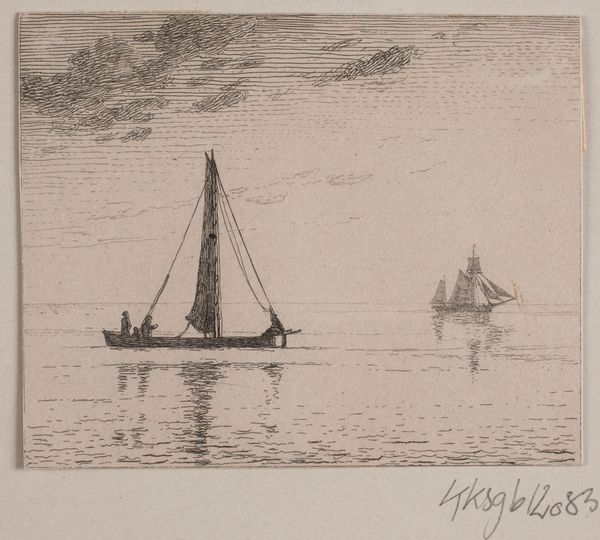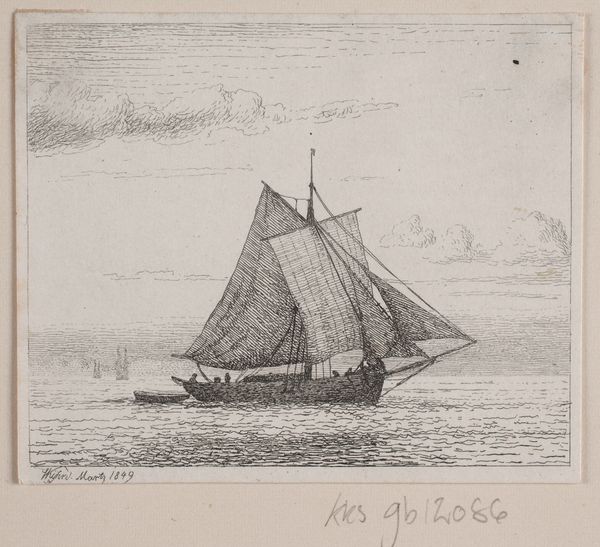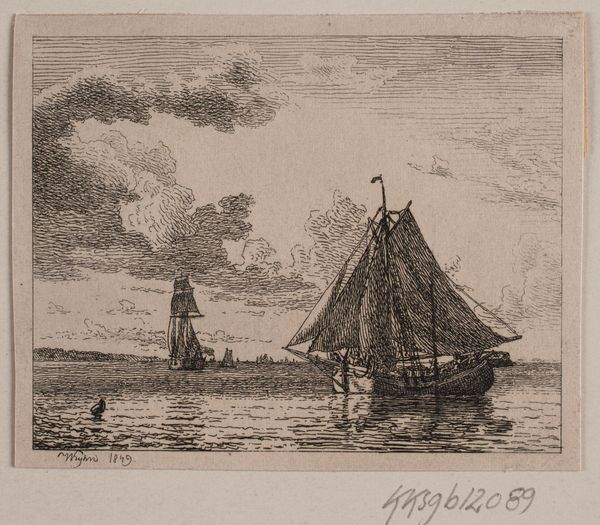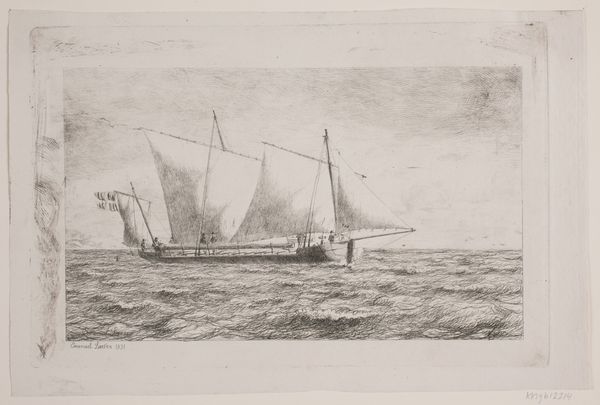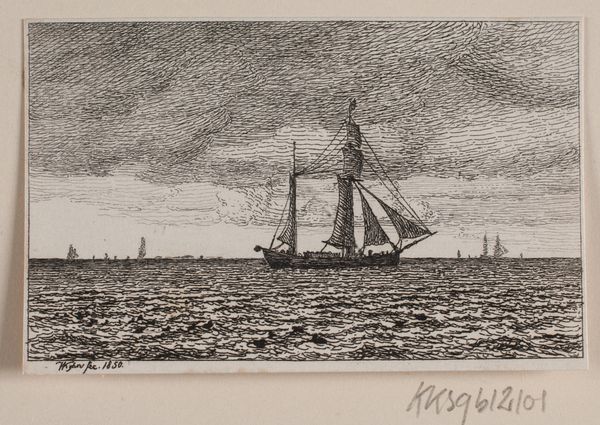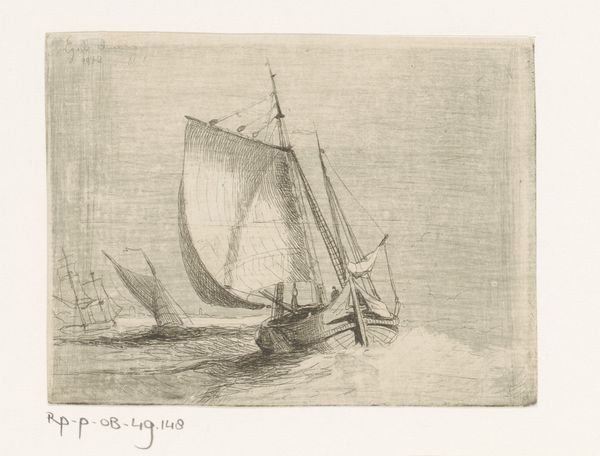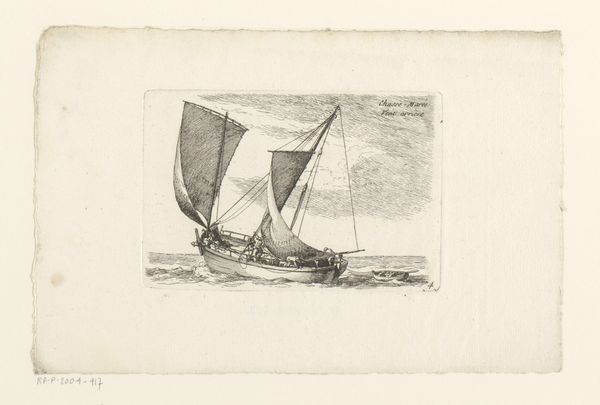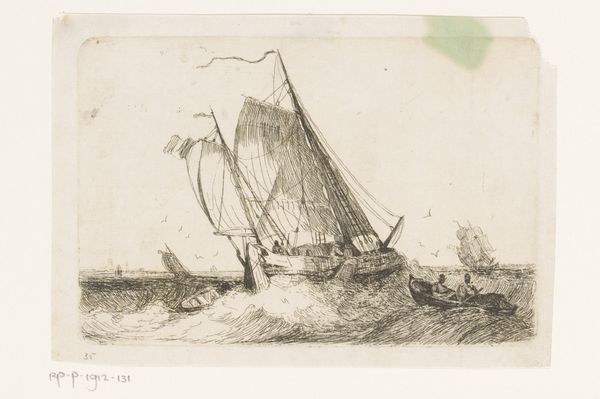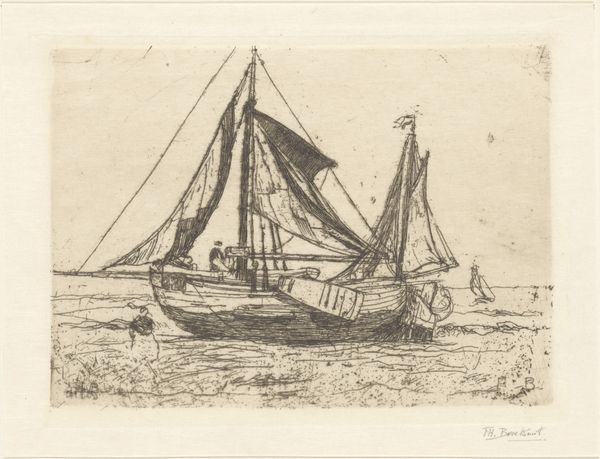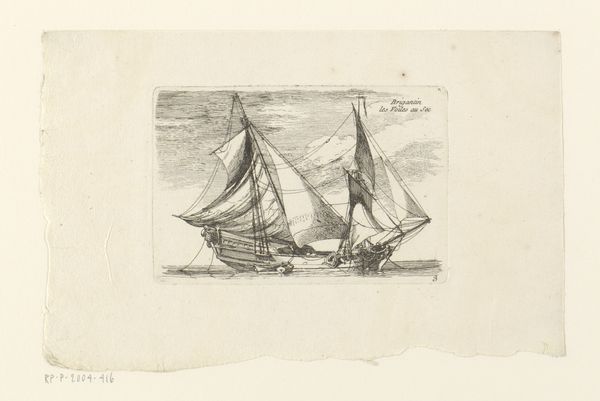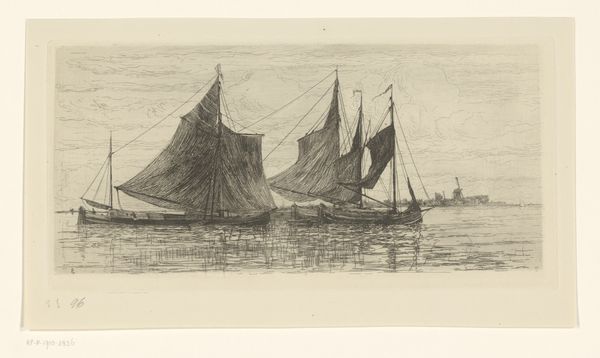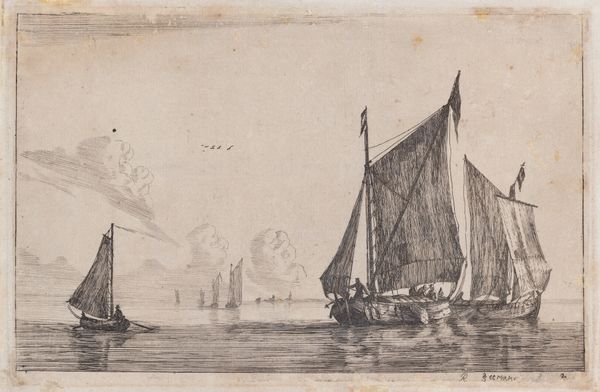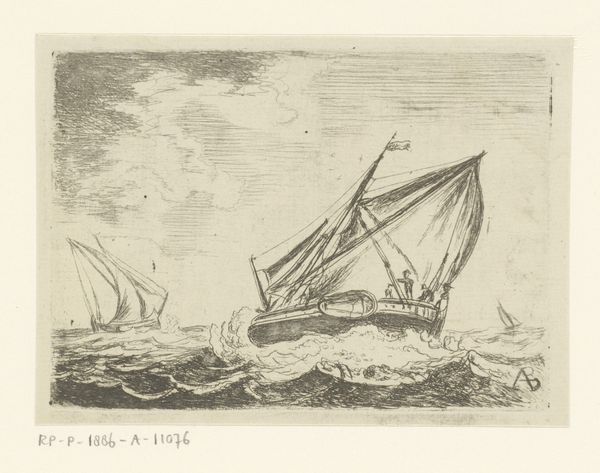
print, etching
# print
#
etching
#
landscape
#
romanticism
#
realism
Dimensions: 62 mm (height) x 77 mm (width) (plademaal)
Editor: This etching, "En Jagt," or "The Hunt," by Vilhelm Kyhn from 1849, presents a ship filled with figures sailing on what seems to be a calm sea. There's something about the detailed lines that makes it feel very precise. What aspects of this piece grab your attention? Curator: Immediately, I think about the production of this image. Etching is a labor-intensive process; each line etched into the metal plate reflects time, skill, and intention. Consider the social context: Who would have commissioned or consumed such an image? Was it intended for mass production, highlighting accessibility, or a select few, emphasizing exclusivity and class? Editor: That's interesting. I hadn't considered the printmaking process as deeply. Could it be that the artist intentionally chose etching to appeal to a specific social class, as you suggest? Curator: Precisely! Kyhn’s choice of etching positions the artwork in a web of material relationships. How does this process itself inform your interpretation of the subject matter: the boat, the sea, and the figures within the context of Romanticism and Realism styles. Editor: I see your point. Etching creates a detailed but reproducible image, democratizing access. The materiality shapes the message, linking this pursuit of maritime leisure with growing access of visual art. I used to only look at painting or sculpture from the 19th century as markers of economic shifts but hadn't quite considered prints. Curator: Exactly, we can begin to see how artists themselves fit into socioeconomic system of that moment through their production. Editor: Well, thinking about art this way opens a completely new level of interpretation. I will surely remember Kyhn´s production from now on.
Comments
No comments
Be the first to comment and join the conversation on the ultimate creative platform.
